How I Went from 500+ Pieces to a Minimalist Wardrobe: 10 Steps
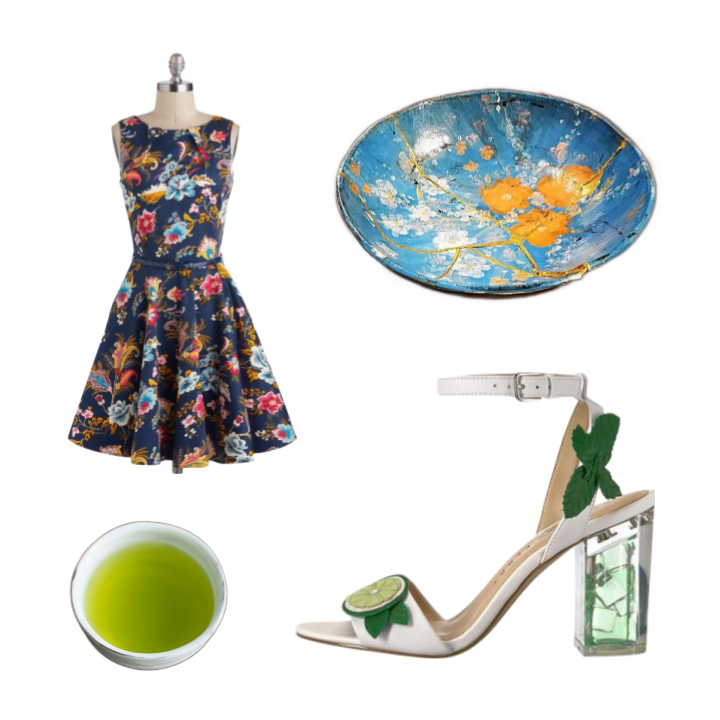
Although I’m usually a fragrance blogger, this blog post is not about perfume. It’s about wardrobe decluttering. Under the hood, it’s about comfort, minimalism, and escaping the pressures of excess. I hope it’s something the perfume crowd still finds interesting, and, perhaps, applicable to their lives and collections.
My name is Sophie and I currently have 100 items in my wardrobe.
That includes all my clothes and shoes. All of them. Including gym clothes, loungewear, formal wear, sleepwear, camisoles, messy clothes for painting and gardening, and so on.
It also includes all of my jackets and coats, as well as all my accessories, including hats, gloves, scarves, belts, and bags, all of my jewelry, all of my scrunchies and claw clips, and also two swimsuits.
I don’t count socks or underwear because I’m not a Puritan.
A year ago, the number of items was far higher. Last May, this January, and this April, I completed three major waves of decluttering that cut my wardrobe down from what I estimate was over 500 items to just 100.
Granted, I didn’t actually count the number of items in my wardrobe until the most recent April round of decluttering, during which I started with around 300 items. Based on how many items fit in each of my donation bags, I can safely estimate the starting number was at least 500 to 600 items.
Regardless of what the exact number was, it was way too much for me. The majority of the pieces in my wardrobe went unworn year after year. My drawers were stuffed so full they wouldn’t open. Moving — which I do regularly — was a colossal pain.
There’s a quote from Airman’s Odyssey that I adore:
A designer knows he has achieved perfection not when there is nothing left to add, but when there is nothing left to take away.
Antoine de Saint-Exupéry
So I decided to Saint-Exupéry my wardrobe.
And now, one year later, my 100-piece wardrobe feels just right. Not only does it have everything I need to use, but I use everything in it. There is nothing left to take away.
It’s perfect, even though it’s not a teeny tiny itty bitty 30-piece year-long capsule wardrobe that requires I do laundry twice a day and go to brunch in my gym clothes.
It’s also not a ridiculous overflow of excess like it was before.
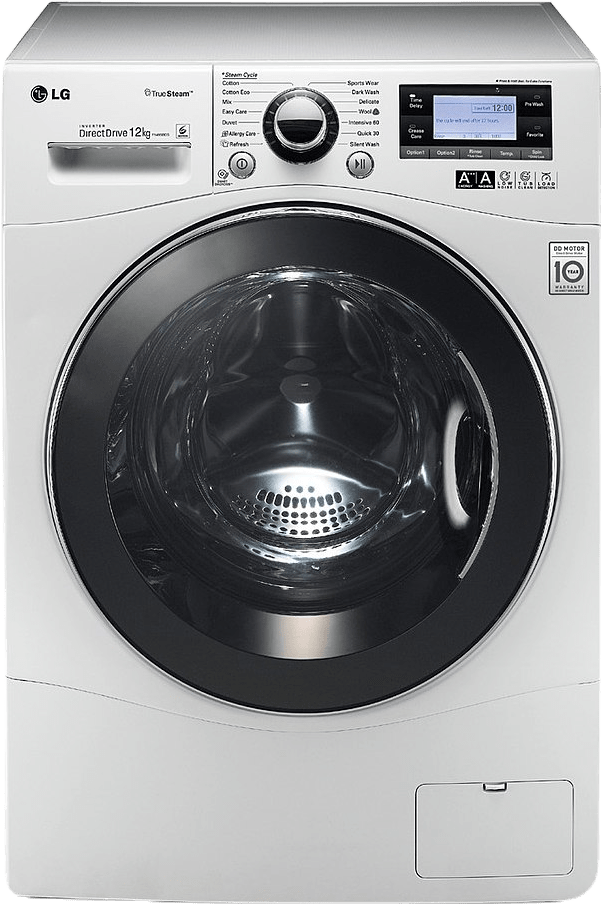
I have clothes for any conceivable activity or occasion that might come my way. I have a healthy — but not overwhelming — amount of choice in outfits. Best of all, I can continue to only do laundry only once or twice a month. (I hate doing laundry because it requires driving fifteen minutes to a coin-operated laundromat where every nook and corner is full of somebody else’s melted Tide pods and sopping wet dog hair.)
Is 100 a magic number? No. Is it the life-changing secret to conquering your closet? Nah. It’s just a comfortable place that happens to work for me right now.
Over the last year of decluttering I’ve learned a lot about how — and why — to cut down on the size of my wardrobe, and today I’d like to share some of it with you.
So I’ve written out the ten step process that guided me through getting rid of over two thirds of my wardrobe. Regardless of whether minimizing your wardrobe or other possessions is currently a goal of yours, I hope you take away some wisdom that’s helpful to you.
I also hope this will be a unique perspective because I’m not a fashion blogger. Clothes aren’t my livelihood. I’m not trying to write a book about them or get you to follow me on Instagram. (I think my mom has more Instagram followers than I do.)
I’m just a regular person with a regular person wardrobe. Not the endless supply of carefully curated, versatile high-quality pieces all the fashion influencers have. (Seriously, how do you guys do it? How much time do you spend shopping? I’m in awe.)
And I won’t pepper in any affiliate links for $600 white tee shirts, beige sweaters, and oversized blazers you absolutely must buy to have a complete capsule wardrobe. Pinky promise.
But first, to help you visualize how big a 100-piece wardrobe really is, here’s the current state of my closet broken down into categories.
My Wardrobe By the Numbers
55 pieces of clothing:
7 pants
6 shorts
3 skirts
7 short-sleeved shirts
7 sleeveless shirts
11 long-sleeved shirts
8 sweaters
6 dresses
8 pieces of outerwear
7 pairs of shoes
2 sets of swimwear
18 accessories:
8 pairs of gloves
5 bags
2 scarves
2 hats
1 belt
4 pieces of jewelry:
3 pairs of earrings
1 ring
6 hair accessories:
1 claw clips
5 scrunchies
100 total items
You may notice some patterns in the numbers.
These repeated numbers aren’t intentional. Contrary to some minimalist wardrobe advice out there, I didn’t go into this with a list of how many items I needed in each category. I didn’t particularly plan before I started. I simply kept the comfortable things I wear and love and got rid of the rest. I found that the numbers of favorites in each category each ended up being in a very reasonable range without aiming to hit any specific quantity.
The point here is that numeric goals aren’t necessary to a decluttering project. You don’t need to hit 150 total items or 100 clothing items or 10 sweaters. You just need to keep what you love. Don’t worry about being “minimal enough” and hitting a specific number.
I’m satisfied with what I have. Every single item is something I like to wear. I have clothes for every occasion. There’s enough of it to live comfortably and wash my clothes at the gross hairy laundromat as infrequently as possible.
Now let’s get into the ten steps that got me here.
1. Get Rid of Anything That Isn’t Comfortable
Both physically and emotionally.
Pain and discomfort are things that can sneak up on us. We get used to them. We stop thinking of them as unacceptable.
If you want to pare your wardrobe down to just things you love and feel good in, you need to prioritize comfort. Your body subconsciously does when you get ready in the morning. It’s why you keep reaching for the comfortable things. And if the only really comfortable things you own are sweatpants, no wonder that’s all you want to wear.
Physical Discomfort
Get rid of all the things that don’t fit. If it’s pinching and pulling because it’s too small, it doesn’t belong in your closet. End of story. Wearing a slightly smaller pair of pants is not a badge of honor, and it is not worth the pain and chafing.
Something can fit you perfectly and still hurt. In my humble opinion, those things need to go, too.
In coming to terms with this, I slashed broad swathes of my wardrobe. I accepted that tight-fitting pants give me pelvic pain, that high heels are bad for my knees, that so many pairs of narrow shoes give me blisters and corns in my wide duck feet. All of those things needed to go. Every single one.
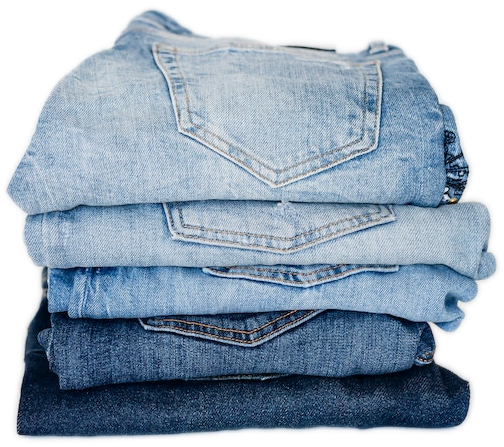
Oftentimes when doing these reflections we discover suboptimal pieces that are there just to tide us over. I don’t love the neckline on this black shirt, but I need a black shirt, so it will have to do for now. These shoes aren’t quite comfortable, but they’re my only professional shoes that go with brown or blue. If you find pieces like this and have the means to replace them with something better, get rid of them now. You’ll find your way through without them, I promise.
If you have clothes that you’re keeping in wistful hopes of being a certain size, get rid of them. If your body is actively changing as we speak, keep them, but if you know it’s wishful thinking, do the kind thing for yourself and get them out of your closet. You deserve to like what you’re wearing right now, not just someday if your body changes.
What About Weight Fluctuation?
People, especially women, often keep clothes for when their weight fluctuates. How can I really declutter when I need a sufficient wardrobe for my heavy days as well as my lighter ones?
My ability to give advice here is limited, since I’ve never really had this problem. Sure, my weight fluctuates, but my clothes all fit adequately on my body on either side of the scale.
I wear a lot of loose items and belts, breathable and comfortable cuts. I don’t wear anything cut so close to my figure that I’m uncomfortable breathing or eating in it. Because keeping yourself from eating enough or breathing deeply in order to fit in your clothes is enormously uncomfortable. And I’m not doing that anymore. See the comfort rule above.
Over the last few years I’ve lost a not-insignificant amount of weight. About 20% of my body weight, to be precise. Far more than anyone’s weight is fluctuating day to day, hopefully.
And sure, I’ve owned clothes at both the larger and smaller ends of that spectrum. That’s probably part of why my wardrobe got so big in the first place. But here’s the thing: I fit comfortably into all my clothes. I still wear and love many of the clothes I wore pre-weight-loss. The way they fit me was comfortable then, and is comfortable now, albeit looser.
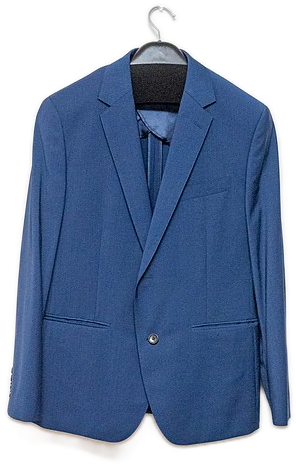
A very few things, like fitted business dresses, look noticeably loose on me in a way that wouldn’t be ideal. Those went on the donate pile. But at the end of the day, I could pop a blazer over them and be okay. It’s not that they look cartoonish or don’t fit.
So, if you need entirely different wardrobes for when your weight fluctuates a little, ask yourself: are all the clothes in your wardrobe truly comfortable? Or are you squeezing yourself into the smallest, tightest things you can, perhaps aspirationally, only for those to not fit when you’re just a little bloated?
A smaller number on the little white tag in your jeans isn’t a mark of merit. It isn’t a moral virtue. You are under no obligation to squeeze into the smallest thing you possibly can.
If you’re serious about paring down your wardrobe, get rid of the items that are rendered entirely unwearable by regular day-to-day fluctuations in weight. Keep just the ones that are physically and emotionally comfortable even after you just ate an entire family-size bag of salted pretzels.
Emotional Discomfort
Physical discomfort isn’t the only kind that can keep you from wearing your clothes. Sometimes they physically fit, but something about them makes you feel anxious, or insecure, or just not like yourself.
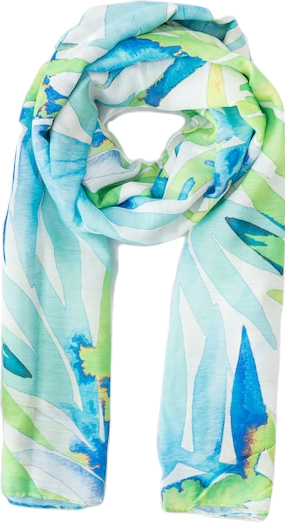
These, too, can be aspirational. Maybe you really want to be a chic indoor scarf wearing person, but whenever you try you just feel silly. Or maybe you have a dramatic lacy black shirt you keep meaning to wear but you just can’t pull together the guts to experiment with the goth aesthetic. Or maybe you hope you’ll feel good enough about your body one day to wear those teeny tiny shorts.
All of these items need to leave your closet. If you don’t like wearing them, or never wear them at all, they’re not serving you.
A special subset of this is discomfort and apprehension related to laundry. As simple as it is, this can be the thing that leaves the pieces you find most beautiful entirely unworn.
Maybe you like how you look in white, but whenever you wear it you’re nervous you’re somehow going to spill an entire jar of spaghetti sauce on yourself and ruin the garment forever. Or maybe you like the feel of your flowy silk wrap dress, but you never wear it because you know you hate laundering silk with the death of a thousand suns. (Both of these examples are totally not plucked from my own day to day life.)
Whatever it is, honor that. If you don’t want to deal with washing it, or being super careful not to stain it, you’re going to end up never wearing it. And those things are taking up dead space in your closet.
Take It For a Test Drive
When I’m not sure about the comfort of an item in my wardrobe, I like to take it for a spin. The next time it’s seasonally appropriate, I pop the item on to go about some chores. Housework is okay, but chores that require going out in public are great. Grocery shopping, dropping off a package, that sort of thing. Even just going for a walk can be telling.
Sometimes I get as far as the end of the driveway before I catch myself thinking, “Hm, I really hope no one I know sees me wearing this.” And that’s when I know it has to go.
Other times I get as far as the post office before I realize my shoes are burning holes in my pinky toes and my spaghetti straps won’t stop slipping off my sloping shoulders.
These are the moments when the test drive has told me what I need to know: the item isn’t comfortable, I don’t like wearing it, and it needs to go.
2. Trust Your Gut
You might be tempted to sanitize your decluttering journey into a purely rational, sans-feelings process. You might want to design the optimal closet for yourself on paper and execute it to a (literal) tee, regardless of how you feel about each item. You might even find yourself scouring Pinterest for the perfect capsule wardrobe template to blindly model your closet after and then throw out the rest.
This is a mistake.
Your feelings are what get you dressed in the morning when your eyes are glued half shut and you’re trying not to trip over your cat. They’re what keep you reaching for the same few comfortable items.
And how you feel about your clothes really has a colossal impact on your day-to-day emotional state.

Coco Chanel supposedly once said, “Dress shabbily and they remember the dress; dress impeccably and they remember the woman.”
I’d like to turn this sentiment inwards. Here’s my version: “Dress uncomfortably and you spend all day thinking about your clothes; dress comfortably and you can get on with your life.”
And, as outlined above, I don’t just mean physical comfort. I mean emotional comfort: feeling that your clothes suit you and fulfill your needs.
The only one who gets to decide how many clothes you need of a certain type, and if you need them at all, is you. The only person who gets to decide whether you keep a certain item is also you. You’re the one who’s going to be wearing the clothes. Make sure you feel good about them.
That means you need to trust your gut. If everyone around you is telling you that you need to get rid of an item but you truly love it, keep it. Who cares what they all think?
The more common inverse of this also holds true. If everyone is telling you a particular item is a classic, or a staple, or it looks great on you, but you don’t care for it? Get rid of it. They’re not the ones who are gonna be wearing it.
Every single capsule wardrobe blog post I have seen in my life says you need a white tee shirt. I don’t have a white tee shirt. I don’t want a white tee shirt. Why? Because I used to have a white tee shirt, and then I bit into a tomato that spurted tomato seeds all over the front. I mostly removed the stain, and if I don’t tell people it’s there they don’t notice it.
But I know it’s there. I notice it. And it bothers me.
So I got rid of my white tee shirt and I didn’t particularly feel the need to replace it. All I can imagine is another tomato seed debacle looming on the horizon. And so I don’t own a white tee shirt, and that suits me just fine.
All those lists of capsule wardrobe essentials and basics are entirely bunk. You can decide what your wardrobe basics and key pieces are based on what you like to wear. Don’t let the influencers talk you into buying an oversized blazer if you don’t like blazers. Don’t get a little black dress if you don’t like black or little dresses.
If what you’re feeling about an item it isn’t a yes, it’s a no. End of story.
“Eh, I’m not sure, I guess I could make it work” is a no.
Of course, for this method to be useful, you need to know what a resounding yes feels like for you. Find your favorite clothes in your closet. Put them on. Wear them around, look in the mirror, admire them on yourself. Notice how they make you feel.
That’s what you’re going for with everything in your closet.
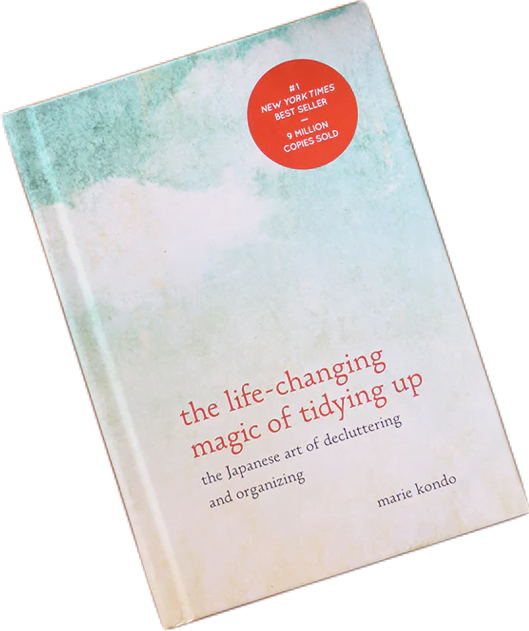
If you catch yourself trying to convince yourself to keep it, that’s also a no. I often find myself bargaining in this way when I feel like someone else wants me to keep something, or it’s really good quality, so I have to keep it. If you feel yourself getting nervous and defensive, arguing with yourself over whether or not you “should” keep an item, that’s a sign you don’t really unambivalently like it. And you don’t have the time or space for that.
Of course, would this really be a blog post about decluttering if I didn’t mention Marie Kondo? I’m a huge fan of her KonMari Method. If you need some help connecting to your gut feelings about your posessions, her classic book, The Life-Changing Magic of Tidying Up, is a great resource.
Marie Kondo’s book is one of the main things that helped me go from being an actual bona fide I-can’t-throw-this-used-paper-napkin-away hoarder to someone who has a healthy relationship with her stuff. The way she centers joy, gratitude, and introspection in her decluttering process is something that’s really stayed with me over the years, and is probably seeping out of this article at every seam.
3. Have an Abundance Mindset
You’re cute. This is a verifiable fact.
What does this mean for your decluttering journey? That lots of things are going to look good on you. Merely looking good on you is not grounds to keep an item. There are plenty of items out there that will look fantastic on you.
Also, there are tons of beautiful, high-quality, gorgeously constructed items of clothing out there. Expensive ones, too. Extraordinarily pretty dresses and jewelry. There is an endless abundance of these things. Merely being a pretty piece is not grounds to keep an item.
And, while this varies quite a bit from person to person, I can assure you that there are lots of things out there that will fit you comfortably. Merely being comfortable is not grounds to keep an item.
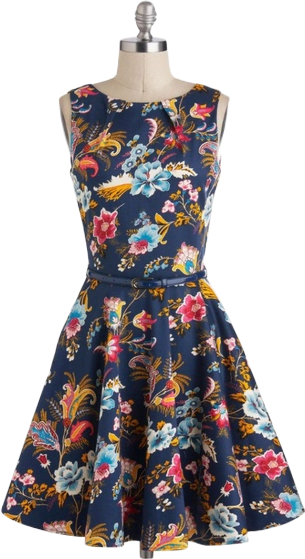
Sometimes an item is all of these things. One of the final pieces I eliminated from my closet was a gorgeous cotton dress I bought from ModCloth over a decade ago. The material was high quality. The dress was well-constructed. The print was quirky, the colors were pretty, and it looked adorable on me. I’d spent what had been a lot of money to me at the time on it. It was the sort of dress I could dress up or down, wear casually or formally. And it had a fantastic skirt that made it great for dancing.
And yet, in a decade, I’ve worn it literally once. Ever.
Which meant it had to go.
An item of clothing can check all the boxes on paper and still not feel quite right. You might not be able to place exactly what’s wrong with it. You don’t have to. No one is asking you to show your work.
If you don’t wear it and you don’t feel excited to wear it, let it go. There is an abundance of clothing out there that will feel good and excite you.
Seriously, do you know how many clothes there are? And how accessible and readily available they are today, compared to just decades ago? There are absolute mountains of the stuff out there. Plenty of it will be right for you. Get rid of anything that isn’t, and you’ll make room for it to come into your life (and your closet).
4. Take Ownership
The thing that bothered me most about my colossal wardrobe wasn’t digging through it to find something to wear. It wasn’t how difficult it made moving. It wasn’t even the storage space it took up. (Though all of these things were very annoying.)
No, what bothered me most about it was the vague sense that my wardrobe was not my own.
Sure, the clothes were all in my possession, literally speaking. They were either gifted to or bought by me.
And yet, the thing that came up in my mind most often when I came across things I didn’t want to wear was this: “I can’t get rid of that. My mom/dad/boyfriend/ex/bestie/neighbor/dog gave it to me/said it looked good on me/told me to keep it.”
I felt I wasn’t allowed to get rid of my own clothing.
Which is, of course, ridiculous. It’s my stuff. I own it. I have the right to do with it what I please, and that includes getting rid of it.
This sense that I didn’t have ownership over my own wardrobe is the main thing that kept me from discovering my own personal style. I couldn’t learn anything from looking at the things I liked to wear all together, because they were buried in piles and piles of stuff other people told me I should keep.
I don’t care if your mother, the Pope, and the head of every member state of the United Nations all agree that dress looks fantastic on you. If you don’t like wearing it, it should not be taking up space in your closet. End of story.
This can happen on a grand cultural scale as well. Especially to women.
For instance, maybe you feel like you have to wear high heels for work to be professional, but you hate high heels. You need to stop letting the world tell you what to do. Flats and loafers are perfectly professional and more comfortable than high heels for most.
(Fun fact! Wearing high heels regularly is actually harmful to your musculoskeletal structure. Over time, it causes damage to the knees that can eventually turn into osteoarthritis, also called wear and tear arthritis. Trust yourself and your body and stop wearing heels if you don’t like them.)
Or maybe your family always made you wear dresses growing up and now you feel like you have to have some.
Or you’re someone who’s happiest wearing the same black tee shirt every single day, but you feel like people are going to judge you for it.
Maybe they will. So what? They’re not you. They’re not the ones storing and wearing your uncomfortable clothes.
You are the boss of your life and your closet. You need to keep only what you like wearing. Not what everyone has told you you’re supposed to like wearing.
If your boyfriend thinks that itchy blouse you hate is so pretty, he can wear it himself.
5. Ask How Often You Wear It
It’s time to be bluntly honest with yourself.
The greatest indicator of whether you’ll wear an item of clothing in the future is whether you’ve worn it in the past.
You probably already know what your go-to pieces are. They’re things you feel comfortable in that are appropriate for your lifestyle and day-to-day activities. These are the things that should stay in your wardrobe.
But those fun going out shoes that are sooooo cute but don’t match anything else in your closet so you’ve worn them twice in five years?
Those should probably go.
Some people use a blanket rule of “If it hasn’t been worn in a year, get rid of it.” When I was decluttering, I cut myself just a little bit of slack in this regard. I found and tried on some items I really and truly love that I haven’t worn in the last year simply because they’ve been buried among all the other choices.
About two dozen items in my remaining wardrobe haven’t been worn in a year. I’m keeping them, but they’re on probation. Each one of them gets a test drive as soon as seasonally appropriate. And if in another year I find I still haven’t worn them? Out they go.
This is not to say that every single item in your ideal wardrobe has to be something you use regularly. It’s okay to have specialty items that come out only a few times per year, or even less. You don’t want to get rid of your snow boots just because you’ve had a few mild winters. Having one formal outfit for interviews and one black outfit for funerals is always a good idea. And, of course, you’re not going to get rid of your swimsuits because you haven’t worn them in a few months if it’s currently freezing out.
But generally, the majority of items in your closet should be things that are comfortable and appropriate to wear regularly during at least one season of the year.
This is an area where your lifestyle really comes into play. If you work in a casual environment, maybe you don’t need dozens of suits. If you don’t go to church anymore, maybe you don’t need quite so many modest church-appropriate dresses. If you live somewhere that’s boiling hot most of the year, maybe you don’t need so many sweaters.
You might find patterns like these in your closet. Once again, these can often be aspirational. Maybe you want to be someone who dresses up more, or goes to the gym more, or coordinates elaborate monochromatic outfits regularly. But if you don’t wear any of those items and you don’t honestly see yourself starting any time soon, let them go along with the expectations for yourself you’ve attached to them.
6. Assess the Cohesion of Your Wardrobe
This is the part where you make sure everything in your remaining wardrobe goes together. It’s what makes the difference between a cohesive capsule wardrobe and a smaller wardrobe that still leaves you frustrated with nothing to wear.
First, make a list of the main sorts of activities in your life that require their own type of clothing. I have six: casual activities, lounging around the house, active activities (like long walks and going to the gym), formal activities (like interviews), work, and swing dancing.
Each of these activities has its own sartorial requirements. Lounging clothes should be comfortable even when sitting and lying down in all sorts of strange pretzel-like positions. Activewear shouldn’t be stiff, fragile, or easily stained by sweat. Swing dancing is so much more fun when wearing a good swishy circle skirt.
Assess your wardrobe with your list of activities in mind. Make sure you have enough clothes for each of them. Pay particular attention to the versatile pieces that can work for several different activities.
Get creative. Could that work dress be worn to church if you pair it with a sweater? Could that sitting-around-at-home shirt also be a gym shirt? Could that formal blazer also make for a fun casual jacket?
Challenge yourself to come up with three or five different ways to wear each item. (This is going to be a little different for pieces like dresses and jumpsuits, where one piece is basically the whole outfit. But you can still brainstorm several pairs of shoes, jackets, or accessories to pair with these.)
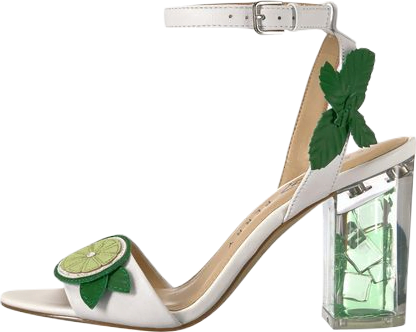
In putting together these outfits, pay attention to lifestyle activities as well as silhouettes and colors. Sure, that mint green pinstriped button-down and those green mojito-themed lucite heels might match in terms of color, but could you ever picture wearing them together to the same place? Unless you happen to work at a boardwalk ice cream parlor that is also a bar, the answer is probably no.
Write down a list of your most challenging items. These are the weirdly specific things that don’t really go with much else in your wardrobe.
Some of my challenging pieces are my red blazer and purple flats, since I don’t wear a lot of red or purple, and I also don’t wear a lot of blazers or flats.
For each one, write down as many outfits as you possibly can using the item. It’s okay if not every single one is great. This is a creative exercise.
If you’re stuck with an item that really can’t be worn more than one way — or doesn’t go with anything at all — carefully assess whether you need it in your curated wardrobe.
If it’s beautiful but you have no idea how to wear it, you have an opportunity to share that beauty with someone else who can give it room to shine.
As you’re doing this, pay particular attention to your outerwear and shoes. It’s so easy to hoard unique jackets and cute shoes and then never actually bring them out of the hall closet. At the same time, shoes, outerwear, and accessories that match your clothes can really pull together an outfit.
If you simply can’t think of a single way to wear those chunky lucite heels or oversized earrings in the context of your lifestyle activities, it’s time to let them go.
Discovering Wardrobe Gaps
As you’re brainstorming these outfits, you might discover gaps. “Man,” you might think, “so many more of these outfits would work if I had a black purse big enough to fit my laptop.”
Or maybe, “I’d have so many more comfortable summer outfits if I had some light linen pants.”
Or even, “I could change up the look of all these things so easily if I had a good pair of sunglasses.”
Write those things down. Treat each wish list item like any item currently in your wardrobe and brainstorm some outfits. Assuming each one really could be utilized in a variety of ways, make a list.
This is the list of things you’re looking out for the next time you go shopping. You don’t need to aimlessly wander through stores anymore waiting for something to catch your eye, because you know exactly what few pieces you need to make your wardrobe a whole lot better.
Yes, I’m giving you permission to shop in an article about decluttering. (You’re welcome.)
But only after you finish all the other steps and have let your decluttered wardrobe sit for a little. It’s like cooling a cheesecake once it comes out of the oven: you need to let things stabilize. If you cut into it while it’s still hot it’ll feel mushy and weird.
If you try to go shopping while you’re still in the process of clearing things out, it’ll probably feel kind of weird. You might feel like you’re setting yourself back in your decluttering goals. Or you’ll get home and immediately want to discard the thing you just bought. Or maybe while you’re out you’ll start itching to replace every single thing you’ve just discarded.
Once you’ve gotten into the swing of things with your new closet, you can go out and get those items that are on your list. Be sure that each one is exactly what you want, not some simulacrum that will do for now but won’t be as durable, comfortable, or versatile.
Hooray for careful shopping!
Versatility
The key to making lots of diverse outfits with less pieces is versatility. The more occasions each piece can work for, the less total pieces you need.
If you really want to reduce the number of items in your closet, you should be able to style each one several ways. Three or five different outfits is a rule of thumb often thrown around the minimalist fashion community, but just pick what works for you.
Remember that list of your daily activities you made earlier? You can use that list to assess the versatility of each item and assign them a versatility score. For example, my main activities are casual, active, lounge, work, formal, and dancing. A dress I can comfortably wear to work, in a formal outfit, and dancing gets a versatility score of three for three categories fulfilled.

I borrowed this concept of versatility scores from Maria Lee, whose incredible Capsule Wardrobe Data blog inspires me to no end. She hasn’t updated the site in a couple of years, but it shows all the pieces in her wardrobe, including clothes, shoes, and accessories. You can see pictures of each item she wears alongside extensive data she uses to continually assess her capsule wardrobe.
So now you can eyeball the versatility of any one item in your closet. By prioritizing items with high versatility, you can hold onto less things while still ensuring you can dress appropriately (and with comfort and pleasure) for any need that arises.
Test Yourself
Look over what’s left in your wardrobe and compare it to the activities you do regularly. Do you have as many clothes as you need for work? For lounging around at home? For going out with your friends? Do you have one formal outfit and one black outfit in case of an interview or funeral? Do you have all the weather gear you need to be comfortable and safe?
Beyond this, do you have enough items to comfortably wear through each season?
Project 333
There’s a popular fashion challenge out there invented by Courtney Carver called Project 333. To participate, you pick 33 items from your wardrobe, including clothes, shoes, and accessories, and wear only those 33 things for 3 months.
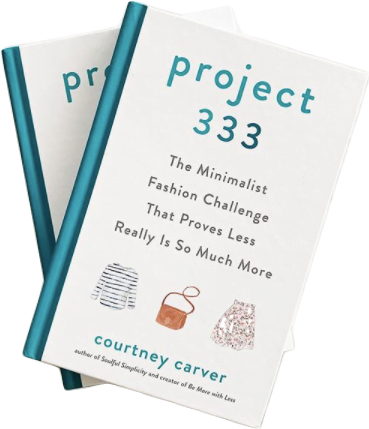
The number 33 isn’t what’s important, and you can adjust it to an amount that’s reasonable to you. The point is making a list of all the pieces you’d want to wear in a season if you were restricted to a relatively small capsule.
I have never actually completed Project 333, but I had a blast at the end of my decluttering project writing out a hypothetical list of 33 items for each season. It was a quick and easy way to make sure I had enough items for all weather. In fact, it revealed I had two dozen items that weren’t listed in any of the four seasonal capsules as a top pick! I eliminated a few more of these, but held onto the rest for now, since I can expect myself to wear a few more than 33 items in one season.
7. Make Sure You Have Enough
I know, I know. When you’re still sitting there with way too much stuff, thinking about keeping too little feels ridiculous.
But it’s easy to get overzealous when decluttering. For me, it’s perhaps easier than for most, because I have OCD — actual clinical OCD, not a quirky penchant for organizing my socks by color — and a rather competitive personality. It was easy for me to come up with numeric goals and compete with myself to beat them. How low can I go? 200 items of clothing? 150 items of clothing? 100 items of clothing? 150 items in total?
But having a number goal isn’t really imperative to getting your wardrobe to a place you’re happy with. And pursuing them can be fun, but it can also be dangerous. I found myself staring at my wardrobe spreadsheet for hours at a time through the month of April, desperately looking for some fat I could trim.
Every single day I told myself I was done, that this was the last of it, that I’d just re-assess this last category of things and I’d be done.
And then the next day I’d be back, looking for another stone to turn.
It was a little obsessive and unhealthy. I started this most recent wave of decluttering when I was stressed about an upcoming doctor’s appointment, and the control, order, and aesthetic ideals of simplicity and cohesion brought me an incredible calm. But it’s easy to keep coming back for more and more of that calm, increasingly frantic as the well of easy wins dries up and you’re stuck choosing between two of your favorite shirts for no reason at all.
It reminded me a little of points in my life when I’ve struggled with disordered eating. “Look how little I can get by with” is a game that’s easy to get hooked on, and it can lead to bad places.
Which is why, in the end, I didn’t let myself severely cut away anything and everything except for a dozen items. Tiny capsule wardrobes look great on Pinterest, but they’re not practical for most people who live in a climate with several different seasons and who dress for a number of different activities.
This is also why I believe in assessing everything in your closet and taking things out one by one, rather than simply plucking out a capsule of your favorite things and throwing out the rest without looking.
Based on the (astonishingly limited amount of) data out there, I know my remaining wardrobe is small for an American woman. (For a European it’s probably on the smaller side of normal. But everything’s bigger in the States, including our consumption of clothes.)
Do I consider it minimalist?
Yes, in that it is the minimum needed to comfortably satisfy all my personal lifestyle needs. That includes my craving for choice and my hatred of communal laundry.
But I can see why some might say no. It isn’t the absolute bare minimum amount of clothes I could have to keep me warm in all weather. I don’t keep to a consistent aesthetic uniform. Some people would consider those to be requirements for a minimalist wardrobe.
In the end, they’re all just words. What matters is living in a way that works for you and makes you feel good.
Less Isn’t More
Over the last few years, as minimalism has seeped into the zeitgeist shaped by bloggers and influencers, a rather pernicious idea has taken hold: “Less is more.”
It’s a slogan you’ll see plastered onto just about every minimalism blog, book, and podcast. Declutter your life, they promise, and you’ll have more time, more money, more energy, more friends, more experiences, more growth, more freedom.
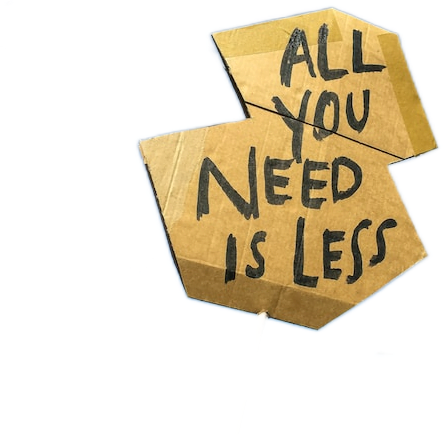
This catchphrase of new minimalism is good for selling books and subscriptions because, ironically enough, it draws on the logic of accumulation we’re all accustomed to. As a result, people are drawn into minimalism not because they want to have less stuff, but because they want to have more of some intangible good.
The anxious crescendo of minimalist influencers chanting in your ear, goading you to get rid of all your dish towels, can’t sell their dramatic this-will-transform-your-life courses solely with the value of having less. It has to come with a promise of more, more, more.
“Less is more” is pithy, but I think it makes for a pith-poor minimalist motto. Here’s why: having more isn’t the point. If your ultimate goal in decluttering is to find more of something, you’re going to end up disappointed.
If you declutter your wardrobe, here are some things that will probably happen:
- You will have less stuff.
- It will be easier to open your drawers.
- It will be easier to see all of your clothes.
- It will be easier to remember what you have and where everything is.
- Moving won’t be quite as arduous.
Here are some things that probably won’t happen:
- You will be jumping for joy as you get dressed every single morning.
- You won’t have time for more than 3.7 jumps, because getting dressed now takes just five seconds.
- As you peruse your slim stack of sweaters, you will be struck by a profound and transformative sense of meaning that will change your life.
- When you check your bank account, you’ll see your savings increase by a factor of ten.
Sure, you might, incidentally, find a little more joy, time, meaning, or saved money in your life after decluttering. But it won’t be life-changing.
People who feel lost, exhausted, and miserable have flocked to minimalism in recent years when what they really want is more of something. Let me tell you: if what you really want is to save more money, waste less time, or find more meaning or enjoyment in your life, there are more direct and efficient ways to do those things than by donating some old jeans.
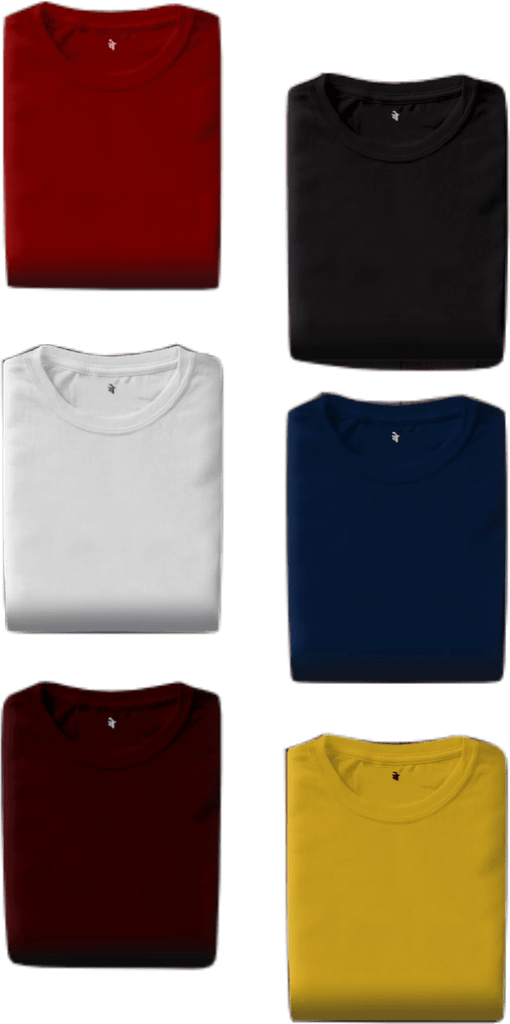
The doctrine of “less is more” is misguided because of the “more,” and dangerous because of the “less is.” That is, the promised more of everything isn’t a realistic expectation to have of decluttering, and having less and less stuff won’t move you incrementally closer to it.
When people don’t find the relief they’re seeking in minimalism, they often assume they’re just not being minimal enough. Cue the ten-piece capsule wardrobes.
I can promise you, going that minimal won’t get you much more of anything. Except, perhaps, more time doing laundry.
If you’ve decluttered your wardrobe to a reasonable level but you’re left itching, consider what you’re looking for. Are you really going to find the joy and peace you want by restricting yourself to two black tee shirts? Or is that an easy but arbitrary surface-level action you feel you can control?
There is far more to you, and your life, than your wardrobe. That’s why fixing your wardrobe won’t fix your life. If you’re not getting what you want out of decluttering, assess your expectations. Write about it until you discover what it is you’re really looking for. Then, make a plan to go out there and get it.
(If you find the ideas in this section interesting, you might like this 2020 piece in the New Yorker by Jia Tolentino. I find myself wandering back to reread it every couple of months.)
A Wardrobe That’s Too Small
Keeping your wardrobe too lean has a few possible negative consequences.
First, if you throw away all your favorite things, you’re going to feel bitter and deprived. Also, you possibly won’t have the clothes you need to dress for common activities like going to work or out on a date. If you’re in a rush and haven’t done laundry, out to the shops you go. And occasionally, an unexpected event like a funeral, formal interview, or snowstorm might come up.
All of these scenarios would likely lead you to go out and shop for tons of new things.
Also, the fewer items you have and wear regularly, the faster those items wear out. Which is fine — things are meant to be used — but capsule wardrobe converts are often frustrated when they see their perfect selection of three tops and two bottoms constantly decaying before their very eyes.
Towards the end of your decluttering project, make sure you still have enough outfits for all of your activities, for unexpected circumstances like funerals, and for comfortable wear within your laundry situation. It’s wise to have more than one outfit for each type of activity, so you’re not wearing the same exact things every day and wearing through them quickly.
How many you need is a personal choice that depends on your lifestyle and how often you like to wash things. Start with how often you want to do laundry and how often you’re comfortable wearing each type of item before washing it and go from there.
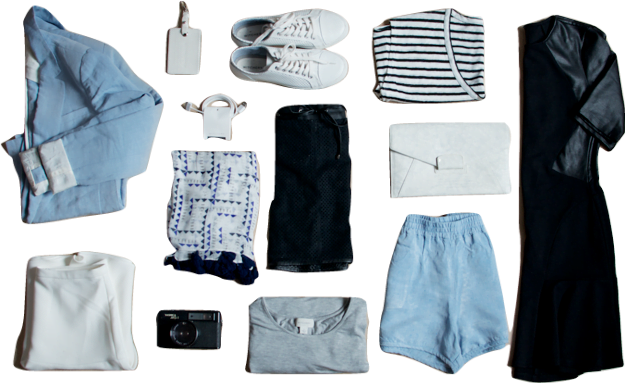
Know When to Stop
Hopefully the exercises I’ve mentioned help you ensure you have enough clothes left for all of your activities and lifestyle needs. It may take some discipline, but stop yourself there. As I’ve mentioned before, getting rid of stuff can feel addictive, but coming back to it again and again for that hit of satisfaction isn’t a good thing. And it can leave you wearing a single threadbare tee shirt every single day just because it felt so good to get your numbers down. Don’t do that.
8. Figure Out How to Get Rid of Your Stuff
Throughout this article, I’ve vaguely referred to getting rid of stuff. But what does that mean? Where does it go?
It’s an important question. Decluttering is fun, but stuff has to go somewhere. You have to be careful not to end up simply cluttering up someone else’s life with it.
Give It Away
My first and favorite way to get rid of items I no longer want is giving them to family and friends. After each round of decluttering, I spread out the clothes, shoes, and accessories I’m parting ways with all around my room and invite some friends over. It’s like a garage sale but free and with mocktails. Inevitably they squeal with excitement over finding something they love.
This is the best way to get rid of clothes, in my opinion, because it doubles your satisfaction. You get the satisfaction of getting something you don’t want out of your life, and the extra thrill of seeing someone you love find something they love. It’s just so much fun to see your friends and family excited to take home a cool new item. To you, it’s a useless pile of unworn rags, but to them, it’s treasure.
If several people do this at once, you can have a swap party, where everyone picks over each other’s things to swap, which can be even more fun.
Sell It
You can also resell your unwanted clothes on apps and online marketplaces like Poshmark, Mercari, Tradesy, and eBay. I honestly can’t be bothered to do this, personally, but my mom loves it. Every time I declutter I pick out the few items made of the best materials or sold by the most expensive brands for her. She then resells them. It’s fulfilling in many of the same ways as connecting a friend to something they love, except you also make money. It’s a really great side hustle if you have high quality clothes and like selling stuff online.

If you can’t be bothered setting up a whole online store, you can also take your unwanted clothes, shoes, and accessories to a local consignment store. Consignment shops are kind of like thrift stores, but with a more curated collection of wares. Some popular clothing consignment store chains in the US include Plato’s Closet, Crossroads Trading, and Buffalo Exchange. (You can also sell luxury items to online luxury consignment shop The RealReal.)
You can bring your bags of things to the consignment store and the employees will look over and assess your items. They probably won’t accept all of them, but for the ones they want, they’ll offer you a price. You can get paid in cash or store credit for your clothes, which are then resold by the consignment store.
This is a great way to get some cash out of your closet without all the work of selling each individual item yourself. Consignment stores are most likely to take items that are in season, in good condition, and are made of quality materials or sold by trendy brands. You’ll have the best luck if your clothes are laundered and neatly folded and arranged in a clear plastic container rather than just dropped off in a rumpled garbage bag.
Donate It
The next option is donating. When it comes to donating clothes, we have to be careful. It’s easy to drop off a giant bag of donations, dust off your hands, and declare it no longer your problem. But it’s still someone’s problem.
Every year, tons of secondhand clothing, mostly from the US, Germany, the UK, and China, are sold in bulk to countries in West Africa, Eastern Europe, and the Middle East. In 2021, the US alone exported $904 million dollars in used clothing.
On the surface, this may seem like a good thing: we don’t want them, they do, what’s the issue? But the colossal international secondhand clothing market has destroyed textile industries in these countries. Local artisans and factory workers alike can’t get by making clothes because the Western imports are cheaper to buy. And textile manufacturing is a critical industry when it comes to the industrialization of a nation, which means our Goodwill donations can hamstring foreign economies.
Some countries, including the six-nation East African Community of Kenya, Burundi, South Sudan, Rwanda, Tanzania, and Uganda, have gone so far as to ban imported secondhand clothing outright. They hope this will allow local factories to create jobs and increase exports.
And if no one ends up buying those clothes we send abroad? (Because really, do you actually think those Pakistani kids want your musty old gym shorts?)
They simply end up in landfills. Landfills in those countries, of course. It’s basically a tidy way to dispose of our textile waste in someone else’s back yard.

So how do you keep that from happening to your clothes?
Ask yourself how desirable your clothes are and face the uncomfortable truth. Don’t donate anything you can’t imagine anyone actually wanting to buy.
Don’t donate things that are torn, stained, or horrendously ugly. Do you really think someone out there is going to swoon when they see your middle school 5K benefit run tee shirt?
Remember the principle of abundance. There are tons of great clothes out there in thrift stores, and the shoppers know it. No one is stopping for your worn out gym shorts or your uniquely hideous free conference swag.
Upcycle It
If you’re crafty, you can upcycle your clothes by turning them into other clothes.
I’m currently hemming an upcycling project that started with a sentimental shirt I haven’t worn since I was eight. It was a red and white striped tee shirt with a piece of lace along the neckline. I wore it the day I flew off my bike riding downhill, and, for some reason, I kept it. And now I can’t make myself get rid of it. So I cut off the sleeves, tore out the lace, mended the tears, made some bigger arm holes, and am turning that childrens’ shirt into a cropped tank top for my adult self.
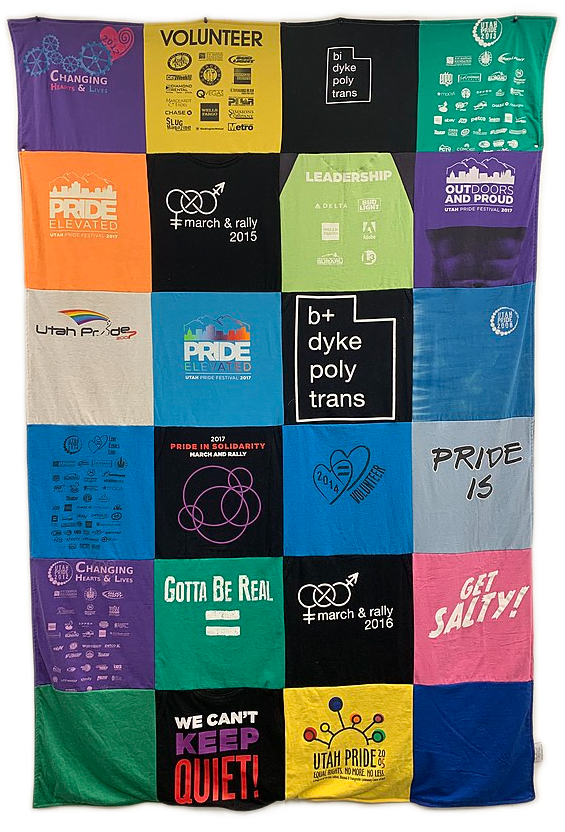
You could also consider making something other than clothes out of them. Lots of people make tee shirt quilts out of their sentimental free tee shirts that they know they’ll never actually wear. Cut up strips of cloth can make great stuffing for plushies and pillows. Tons of great fabric can be cut from old clothes for anything from dog toys to dog beds to dog sweaters to little toy dogs.
That being said, be honest with yourself. If you’ve never sewn a day in your life and you’re not planning to learn, don’t tell yourself you’re going to fashion all those unwanted khakis into a Met-Gala-worthy ball gown.
(Doesn’t that sound awesome, though? I’d like to see a khaki ball gown. Denim’s been done time and time again. Even I’ve sewed myself a denim outfit for a formal. I want to see more dramatically upcycled cargo pants.)
Anyway.
If you have friends who are crafty, you can also have them look through your stuff in case they need material for anything.
Reuse It
Have no interest in arts and crafts? Never fear! There are other ways to reuse old clothes.
Namely, as rags. Cut those old tee shirts into squares and suddenly you have years worth of cleaning cloths. You can use these to dust surfaces, clean mirrors, even wash dishes. Whatever your little eco-friendly heart desires.
Discard It
Some things should just go in the trash. Namely, worn out, gross old holey underwear. No one wants your underwear. Please do not wash dishes with it.
9. Take Inventory
Congratulations! If you’ve been following along and decluttering at home, after a handful of rinse-and-repeat cycles you’ve hopefully pared down your wardrobe to something you’re happy with.
Don’t worry if this takes multiple waves, by the way. Each time I decluttered my wardrobe, I’d be absolutely sure by the time I was done that there was nothing else I can get rid of. Then I’d wait a couple weeks. And I’d start noticing other things I wasn’t wearing.
So then I’d put those aside, and I’d be convinced once again that now it’s perfect and I can’t let go of anything else. And then the next day I’d decide to go through my jeans.

I’m satisfied with where I am now, but I know it isn’t perfect. In a few months I’ll probably find a couple more items I don’t need.
Decluttering is a process that often comes in stages. Let those waves come in as they please. Don’t beat yourself up if you feel like there’s still too much stuff but you can’t let anything else go. Just be patient and focus on other things. In time, you’ll see things you didn’t before.
So you’ve pared down your wardrobe into what may not be its final form but is hopefully closer than where you started.
It’s time to take inventory.
Taking stock of what you have allows you to find patterns in what you like to wear. It shows you the colors you wear the most, the cuts and shapes you’re most comfortable in, the sorts of clothes you choose over and over again for each life activity.
This, my friend, is your style. And paring your closet down to what you really like is how you discover it.
Maybe you’re already confident that you know your style. Props to you. All I can say is that I didn’t. And I learned far more about what I like and feel comfortable in paring down my wardrobe than I ever could shopping or endlessly scrolling through Pinterest.
Patterns give you useful data about what you like to wear. So let’s discover them.
Spreadsheets
If you’re a dork like me (or Maria Lee), you make a spreadsheet. You can put whatever you like in your spreadsheet. Maria tracks dozens of intricate variables and visualizes them in Tableau.
My system is simpler. Currently, my spreadsheet includes:
- A descriptive name for each item,
- Its category (pants, shoes),
- Its main color,
- Its other colors,
- The main material (cotton, linen),
- Any patterns (dots, stripes),
- Any textures (denim, leather),
- How long I’ve had it, and
- A versatility score from 1 to 6.
That’s a pretty short list, but it yields a lot of data and some awesome graphs. (All of my graphs exclude jewelry and hair accessories, since I had these listed in a separate spreadsheet.)
Here’s a little piece of what my spreadsheet looks like:
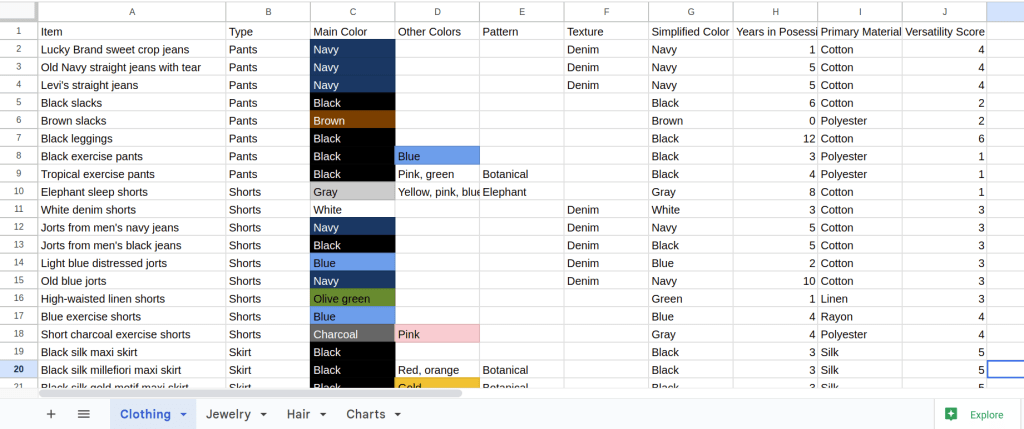
As an example, I’ll include some graphs generated from my spreadsheet below.
Here’s the count of each item in my wardrobe, visualized:

I never had any idea what my colors were before, but now I can see exactly what colors make up most of my closet. Turns out I wear a lot of black, blue, navy, white, gray, and green, with just a sprinkling of warm colors thrown in.

The color graph is my favorite of the graphs because I can look at it without reading any of the labels and instantly gain a lot of valuable information about what I wear.
And here’s the distribution of the primary materials in my clothes, shoes, and outerwear:
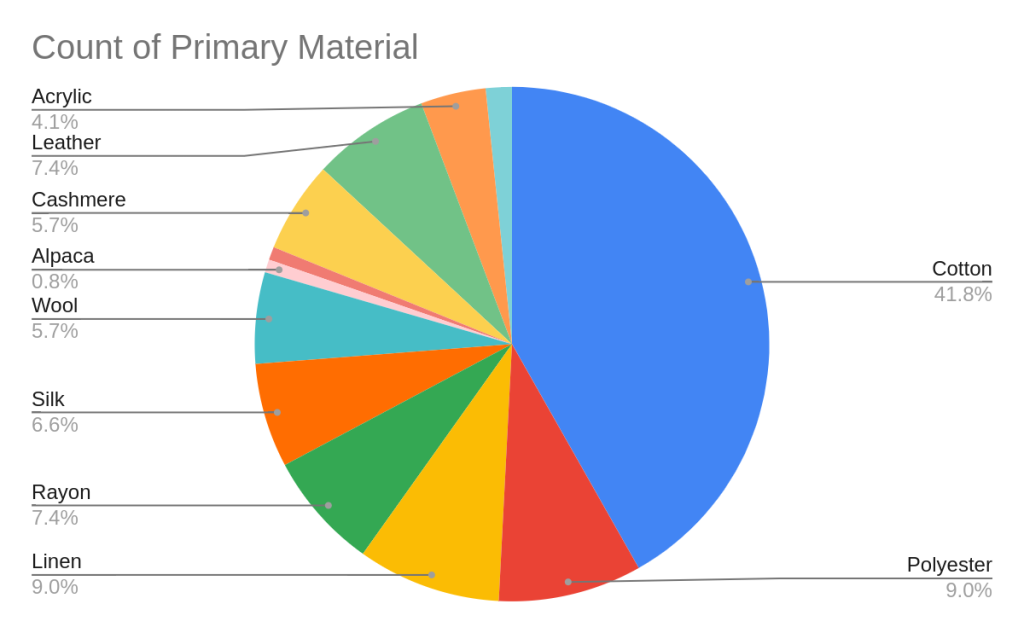
Those slices too small for a label are nylon (blue, 1.6%) and ramie (red, 0.8%).
Note that this data is oversimplified in a way that might be misleading. I assigned one primary material to each garment. When a garment had several mixed materials, I picked the largest percentage. This means a fairly large number of the cotton items, for instance, are closer to 60% cotton than 100% cotton.
The longevity of my pieces is also fascinating to me. For the colossal size of my starting wardrobe, I really don’t shop much. Most of the pieces were handed down to me by my mother over the years.

I call this metric “Years in Possession” rather than age because over 90% of my wardrobe items were either thrifted, hand-me-downs, or both. That means they’re actually significantly older than the amount of time I’ve had them.
And my versatility scores are distributed the way one might expect. Most items are good for three, four, or five different types of activities.

(This is a pretty bad use for a histogram, since the versatility scores are entirely discrete, but wrangling a proper bar graph out of Google Sheets was surprisingly difficult.)
My graphs of patterns and textures are less interesting, since relatively few items in my wardrobe are patterned and textured, so I won’t include them here.
If you’re someone who likes spreadsheets, I really recommend taking inventory in one. I use Google Sheets, which is incredibly simple to use and which auto-generated all of these graphs with little to no tweaking on my part. You can also use Excel or another software of your choosing.
Wardrobe Apps
“But Sophie,” you cry, “Why would I make a spreadsheet if Stylebook/Stylicious/Cladwell/Closet/Smart Closet/ACloset/XZ(Closet)/Closet Love/Closet Space/Indyx/ShopLook/30 Wears/Whering/Pureple/Cloth/LookScope/Combyne/Latitude/Wardrobe/Get Wardrobe/Open Wardrobe/Save Your Wardrobe exists?”

To which I say, you do you. Wardrobe apps are great if you’re into them. I am not for three main reasons:
- I don’t want to spend more time on my phone,
- I can’t be bothered to take or find pictures of all my clothing, and
- I don’t trust a random third-party app to hold onto all of my data and not just disappear or stop working someday.
But if you’re into apps, there are some cool ones out there that allow you to enter all the items in your wardrobe. Many of these include options to track what you wear, and some of them propose new outfit suggestions for you by combining your pieces.
Whatever Works for You
Ultimately, high-tech solutions aren’t necessary for gleaning patterns in your wardrobe. Maybe you want to make lists on paper, or make a scrapbook or collage of all your clothing, or organize your closet in an intuitive and transparent way. Or maybe you feel you’ve gotten a pretty good idea of what you like through all the time you’ve spent sifting and trying on all your clothes.
Whatever you choose to do, write down your insights. Make notes of the cuts, colors, and styles that you like. Next time you’re out shopping, you can refer to these notes. They’ll guide you towards things you’re more likely to wear and away from those aspirational purchases that just aren’t you.
You can also track what you wear in a season by memory or any number of clever low-tech methods. Some people track whether they wear all their clothes in a season by starting the season with all of their hangers facing in one direction, and then turning them back the other way once the clothes have been worn. This is an easy low-tech system that points out items you haven’t worn in a while.
10. Plan Your Next Steps
You’ve decluttered your wardrobe. You’ve come up with dozens of outfits. You’ve taken inventory and found your colors and maybe made some fun graphs.
But wait! You’re not done yet.
Decluttering is a temporary process, but being mindful of your belongings and how you use them is forever. With that in mind, there are just a few more things on your to-do list.
Change the Way You Shop
What’s the use of decluttering if you immediately go out and buy tons more stuff? If you buy new clothes every other day to relax after work, your satisfying half-filled drawers are doomed to soon become overstuffed once more.
Reflect on how often you shop for clothes, shoes, and accessories. Consider why you do it. Is it for stress relief? Is it a social activity? Is it part of a creative process of outfit planning for you?
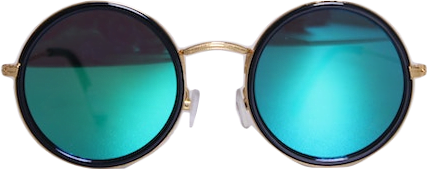
Now that you’ve pared your wardrobe down to what’s sufficient for your lifestyle (and maybe bought a couple of specific items as discussed in step 6), you should have everything you need. You don’t need to shop for clothes and shoes anymore except to replace anything that breaks down or no longer works for you.
That doesn’t mean you can’t still hit the mall every now and then. I love going out shopping, but I very rarely bring anything home. I like to say that stores are like museums except free. Clothes are so very interesting, and you can learn so much about them by going to a store and seeing and touching so many of them. Going to stores can be a fun and educational experience without the compulsion to bring something home.
Get Picky
Decide what’s important to you in a garment and commit to those standards. Don’t just go out there and buy the first black tee shirt you see just because you know you need one. Pick your non-negotiables and go from there. It’s okay if it’s a lot of things. The pickier you are, the easier it is to make choices within your narrow criteria. By knowing exactly what items you’re looking for and exactly what parameters make them good enough, you save yourself the constant decision fatigue of asking, “Do I need this?”
Personally, I’m quite picky about the materials my clothes are made of, and I’ve developed a knack for identifying them by touch. If you let me see and touch your shirt, I can probably tell you the material it’s made of, and possibly the rough percentages if it’s a blend.
People are always amazed by this ability, but it really isn’t any more impressive than being able to name a few notes in the smell of a candle or perfume. Both are learnable skills, and learning them is just a matter of being exposed to enough training data. After smelling enough examples of jasmine perfumes, you’ll understand what jasmine in perfumes typically smells like. After touching enough examples of linen shirts, you’ll understand what linen in shirts typically feels like.
Since I’m so picky about materials, I can practically go out shopping by touch. I can walk along a rack of clothes while talking to a friend, absentmindedly running a hand under the hangers. I stop if anything feels interesting. Linen and cashmere are my favorites, and it’s easy to recognize their textures. Then I can pull that high-quality garment off the rack and see whether it happens to be anything I need in my wardrobe.
Ask Yourself Why You Buy
But if you just can’t kick that consumerist craving, you may need to reflect on what you’re missing in life. What is it that you’re looking for in shopping? Variety? Surprises? Little treats to reward yourself? A shared interest? A social space with other people in it? A way to waste time on the computer at work?
Once you’ve figured out the feelings driving you to shop, you can determine what you actually need. Maybe it’s more time with your friends. Or more time around other people generally, like in a coffee shop or library. Maybe you need more variety in your life and need to switch up your routines. You could spin a wheel to decide what you’re making for dinner, for instance. Or maybe you need to take breaks at work that are actually restful and rejuvenating instead of the brain-numbing experience of mindless online shopping.
Whatever it is, get to the core of it and you’ll find you don’t need the panacea of shopping anymore.
Take Your Data With You
When you do need to go shopping, you can stay focused by bringing your specific list of desired items with you. But you can also bring a general sense of your style and what you wear. Know your colors and favorite silhouettes, and you’ll have a much easier time picking out the perfect new piece when necessary.
Also, remember the things that didn’t end up making the final cut. Maybe there are patterns of types of clothes you bought tons of and didn’t wear.
I know I’m a sucker for oddly specific quirky Ms.-Frizzle-style earrings. But then I never wear them. I just keep wearing the same few versatile pairs that go with everything. I just don’t wear enough red or crustacean-themed outfits to regularly bring out the giant shiny plastic lobsters. But now I know that about myself and can avoid acquiring any more plastic lobster jewelry in the future.
Bask In Contentment
With all this talk of getting rid of things, you might think I’m here to encourage you to feel cold and detached regarding your wardrobe. Like it’s just here to serve you, and any part of it can be comfortably discarded at any time.
But I’m here to tell you quite the opposite. You should like your clothes. They don’t have to leave you jumping for joy, but they should feel comfortable and functional.
And it’s normal to feel fondness for possessions that are useful and suit you. I don’t think that’s a bad thing at all. Get rid of all the clothes you don’t need, and then love, cherish, and delight in all that’s left to your heart’s content.
Oftentimes I find the most intoxicating part of shopping — especially online shopping — is the heady dizziness of wanting something, of craving it, of obsessing over its every little detail and planning what it will be like and how you’ll use it.
As I’ve mentioned before regarding perfumes, you can still do that with things you already own! The contentment, appreciation, and pure giddy joy I feel about my clothes every single day is perhaps my favorite part of my new small wardrobe.
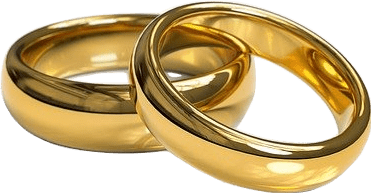
I put in my gold hoop earrings that were my mother’s before me and remember how much I love how they look and how long we’ve had them.
I pull on my plain black tee shirt and admire what a durable material it is and how cool I feel wearing black.
I slip into the blue chambray circle skirt I made in high school and I smile remembering going to my friend’s house to borrow her sewing machine. We crafted side by side and watched Muppet movies all weekend.
I feel spring melt into summer and am practically vibrating with the thought of wearing all three of my beautiful linen dresses.
I jump into my favorite pair of jeans and am delighted with how light and comfortable they feel on my body.
It’s the little everyday things that inject the greatest amount of joy into our lives. Pepper as many of those moments of contentment and comfort into your days as you can. Assuming you wear clothes every day — though I suppose not everyone does — that’s a golden opportunity. Let contentment suffuse your dressing and your days.
Commit to Your Clothes
If you love your clothes and you want them to last, you’re going to have to take good care of them. Commit to taking good care of your clothes the way they take good care of you.
Keep your closet and drawers neat and tidy so that no item of clothing gets lost or forgotten.
Learn how to wash all your clothes properly so that they can stay clean, unstained, and undamaged. Separate your lights and darks and machine wash cold. Learn how to pretreat and remove all kinds of stains. Use garment bags for delicate things or, better yet, wash them by hand.
Learn what materials shouldn’t go in the washer (hint: cashmere, silk) and what shouldn’t go in the dryer (hint: wool, as well as anything that shouldn’t go in the washer).
You should probably seriously reconsider your relationship with the dryer entirely. Machine drying clothes is the most damaging thing most of them go through. It’s far more damaging than machine washing. Being tumbled in the dryer shrinks clothes over time while simultaneously making the fibers thinner and dramatically weaker. Ever open the lint trap and see all the fuzzy stuff in there? That used to be your clothes.
Living in the US, I’ve been using machine dryers most of my life, but I’ll be getting a drying rack when I move into my new apartment next month.
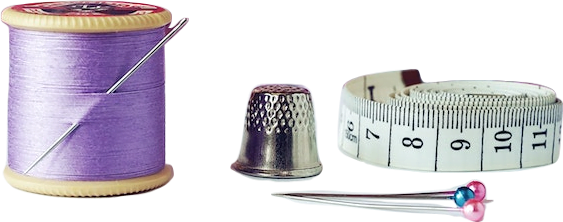
Learn some basic mending. You don’t need a sewing machine or the skills of a seamstress. You just need a needle, a little thread, a good book to listen to, and some patience. When seams tear and hems unravel and mysterious holes show up out of nowhere, you should be able to go in with your handy needle and thread and fix things up.
It doesn’t have to be perfect or invisible. I think clothes are made altogether lovelier when they’ve been mended. It shows you love them and are willing to care for them, and that they are serving you well to deserve that care.
Question Your Ideals
What happens to the emotional value of your clothing over time?
As your clothes get older and more worn, do you see them as breaking down, getting weaker, falling out of favor, becoming less valuable?
Or do you think of them as growing along with you, developing a rich history of wear?
The world of Western aesthetics idolizes flawlessness, proportion, and perfection. As a shirt gets older and more faded, as its hems become undone and random holes appear around the shoulders and back, we typically see it as becoming less perfect, less valuable, less good.
I’d like to share a few traditional Japanese aesthetic concepts and arts that challenge this idea.

The first is wabi-sabi. It’s a Japanese aesthetic ideal that takes a similar place in their aesthetic Pantheon to that of Greek ideas of perfection and proportion in the West. It’s the idea that everything is fundamentally imperfect, and that this imperfection is a part of every object’s beauty. Clay pots and cups should be a little lumpy. Clothes should be a little worn. Nothing is supposed to be perfect.
Allow your clothes to show their signs of imperfection and wear. They’re meant to be that way. All is as it is meant to be.
The second is the art and philosophy of kintsugi, also known as kintsukuroi. This is the art of repairing broken pottery using gold, silver, or platinum-dusted lacquer.
The result is that objects get more beautiful over time for having been broken. They become lined with cracks filled with silver and gold that tell the object’s story. The point isn’t to hide the breakage and repair. That’s the object’s history. It’s natural and beautiful to have it on display.
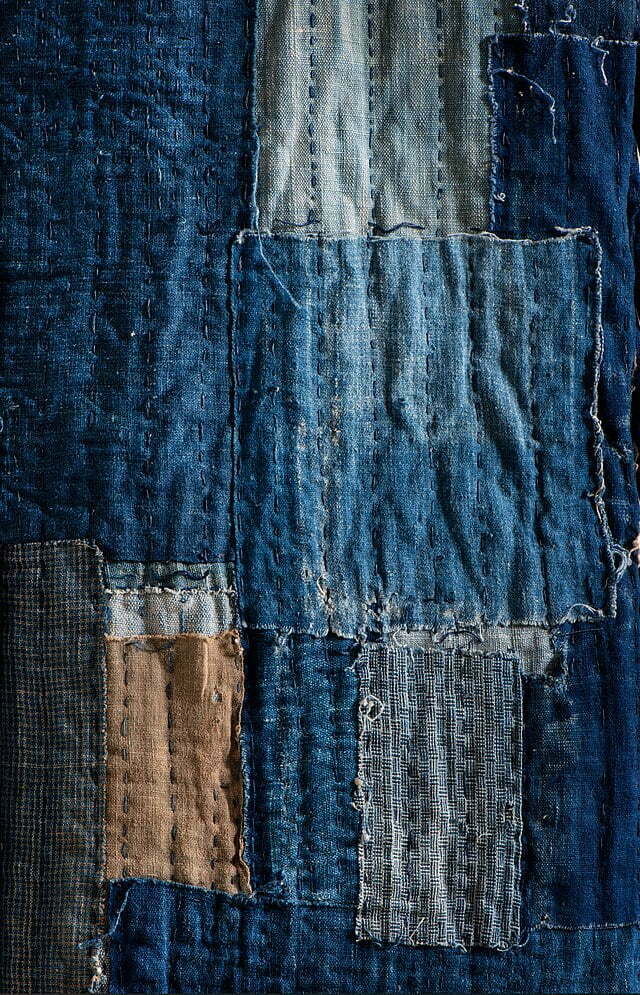
I like to mend holes in my clothes with colorful embroidery thread that’s just a bit brighter and shinier than that of the fabric. Using colorful patches of fabric to cover larger holes can also provide a similar effect.
If you’re interested in Japanese textiles culture, you should also look into Boro, the art of mending worn out cloth continuously with new patches, and Sashiko, a traditional embroidery method designed to reinforce the worn out old cloth, which evolved into elaborate decorative designs. Both arose from farmers’ need to constantly mend the hemp clothes they wore, and have evolved into breathtaking art forms that define Japanese textile history.
Feel Your Feelings
The final Japanese cultural concept I’d like to mention is mono no aware. It’s an idiom, a philosophical idea, and a literary motif all in one, difficult to pin down and translate. It’s a gentle wistfulness at the inevitable passing and changing of things. It’s an awareness of the fundamental impermanence of everything, accepted as a core reality of life.
It’s okay to feel a little sad and empty as you watch your favorite sweater slowly fall apart. This happens to all things, and someday it’ll happen to you, too. Let it happen and let yourself feel it.
Become an active owner of your clothes and commit to taking care of them, and let yourself feel the feelings that come with that commitment. The contentment, the pleasure, and the pride, as well as the sense of wistfulness and loss. They’re all real, human experiences. Being deeply in touch with them through the items around you is a great thing. It may just be the best part of having an intentional, curated closet.

Conclusion
Well, now that I’ve rambled on at you for over ten thousand words about decluttering, I hope you’re able to take something away from this piece. And I hope I’m able to get the decluttering worms out of my brain and move on with my life.
(This probably will not happen to you when you declutter. I just have OCD and find it very hard to stop thinking about a thing all the time once I start. But writing helps, so here I am. Writing.)
And at the end of the day, in the words of Columbo, there’s just one more thing:
Be kind to yourself. Remember that decluttering, reorganizing, and reassessing your relationship with your clothes is about you. It’s not about being the perfect sustainability saint, planting redwoods and feeding the hungry all day in between ice-cold sponge baths. It’s not about getting the lowest number in the capsule wardrobe game. It’s not about being the best, about competing, about winning.
It’s about you.
It’s about pleasure, or simplicity, or cohesion, or fun, or whatever your goals are in sorting through your relationship with your clothes. It’s all up to you. You get to decide what matters. Remember that.
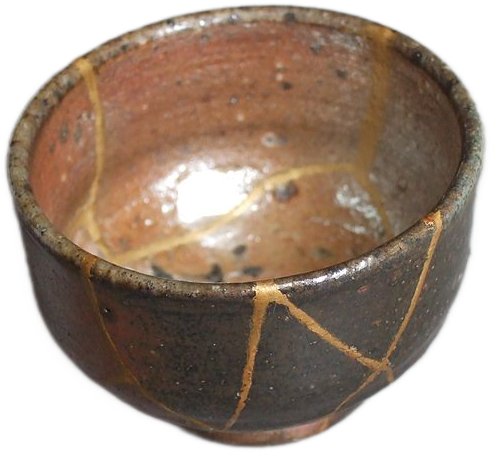
Don’t eliminate things just to hit a certain number. Don’t force yourself to get rid of something that every cell in your body is begging to keep, even if you can’t really think of a practical use for it. Don’t let this practice of having less make you think you’re not enough.
Just be kind to yourself, be patient, and reflect.
This is for you.
It is always for you.
And there you have it. My longest blog post thus far, and it isn’t even about perfume. I really should start making video courses or something. I can’t imagine anyone actually reading all this. But that’s the joy of blogging. It’s my public Internet diary, I get to pick the irrelevant ramble topic of the day.
Do leave a comment if you found any of this post thought-provoking or useful. I’d love to hear about your relationship with decluttering, with minimalism, with your wardrobe, or anything else that’s on your mind.
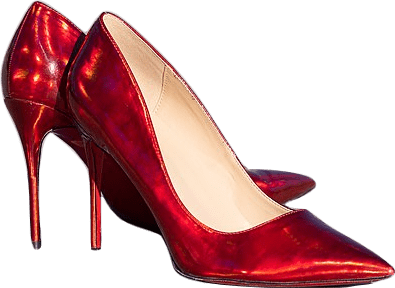



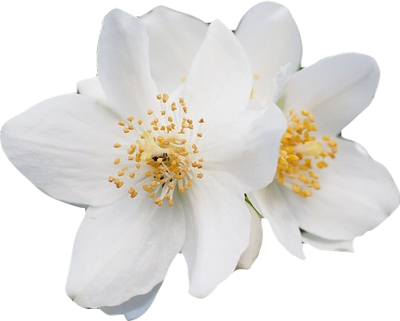




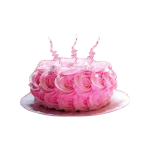

Congratulations on your significant decluttering! I love this because I do this all the time (which means I don’t get to enjoy the catharsis of getting rid of a big load anymore), although I don’t count the number of items. Totally agree about judging by both physical and emotional comfort – part of emotional comfort to me is also the memories associated with an item. I have kept and discarded clothes and accessories based on that when other criteria might prompt me to do the opposite.
I will admit that I switched to skimming this post after reading the first several hundred words, but I get the gist of it and agree with the principles!
Thanks so much! Yeah, I’ve had all my other possessions in pretty good shape for a while, but my wardrobe was looming over me. I don’t like to shop, but my mother does, and we’re the same size, so anything she didn’t want and couldn’t sell would come drifting my way. That’s so true about emotional attachments beating “rational” judgments every time, too. As much as I rationalize them, in the end my choices are based on how I feel about an item, not a logical weighing of its pros and cons.
Wow! What a thoughtful and incredibly helpful piece! I go through decluttering binges (and, yeah, that’s exactly what they feel like – binges – thanks for nailing the potential for abuse there) and while it always starts fine, it usually ends with anxiety or disappointment or other negative feelings and then soon enough the cycle of acquisition and dumping begins again in pursuit of some sort of weird “perfect.” This is the first piece I’ve read that addresses the emotional high of the behavior and helps (me) refocus on what the impulse is — to actually like what I am wearing, to feel like me in ALL of my clothes. Thank you!
It’s my pleasure. I’m so glad you enjoyed this piece, though I’m sorry you can relate to that negative facet of decluttering. I’m afraid I’m doing this quite intensely right now — I’ve burnt out severely at work, which has led to me neglecting this blog for months and also, bizarrely, obsessing over fitting all my earthly possessions into my small car. It almost feels like disordered eating at times, an aesthetic pursuit of control and perfection in the pursuit of less.
Wishing you peace, fulfillment, and enjoyment of your wardrobe and all your possessions. <3
Sophie, have you written a book?
I haven’t (at least, not a published one — I wrote an awful high fantasy novel when I was twelve, but haven’t we all?) but I hope to someday. I sometimes wonder about expanding this blog post to something book length if that would be of value. Why do you ask, Jeannie?
Hi Sophie, I am not sure I have ever commented before, but after reading this article and going through some of your other non-perfume articles and thinking about how lucky I am that there are people out there in the world who write and put their writing in places where I can find them…I just had to say that I love your voice. I love hearing your thoughts and smiling at your wit and humour. Thank you for being here. So happy I found you. I don’t have an interest in perfume, however I have no doubt that I would if I read your perfume-related articles. I am pretty sure that you could write about anything that interests you and you would find readers. Your writing is exceptional. Possibly inspirational…I have been holding onto a domain name for a blog I meant to start years ago. It would be a just for me blog. Sending you love & light from Montreal, suzanne 🙂
Suzanne, I know you left this comment almost a year ago now, but I am looking through the comments on this blog for the first time in a long while (strongly considering a new blog venture after having abandoned this one almost a year ago), and I just wanted to say how much your comment meant to me. I am so delighted to hear that you, with no interest in perfume, still enjoyed looking around my little blog. I hope you did start that just-for-you blog (or still plan to do so now). I might just start one of my own like that as well. If you did (or do), would love to read it if you are willing to share! Much love <3